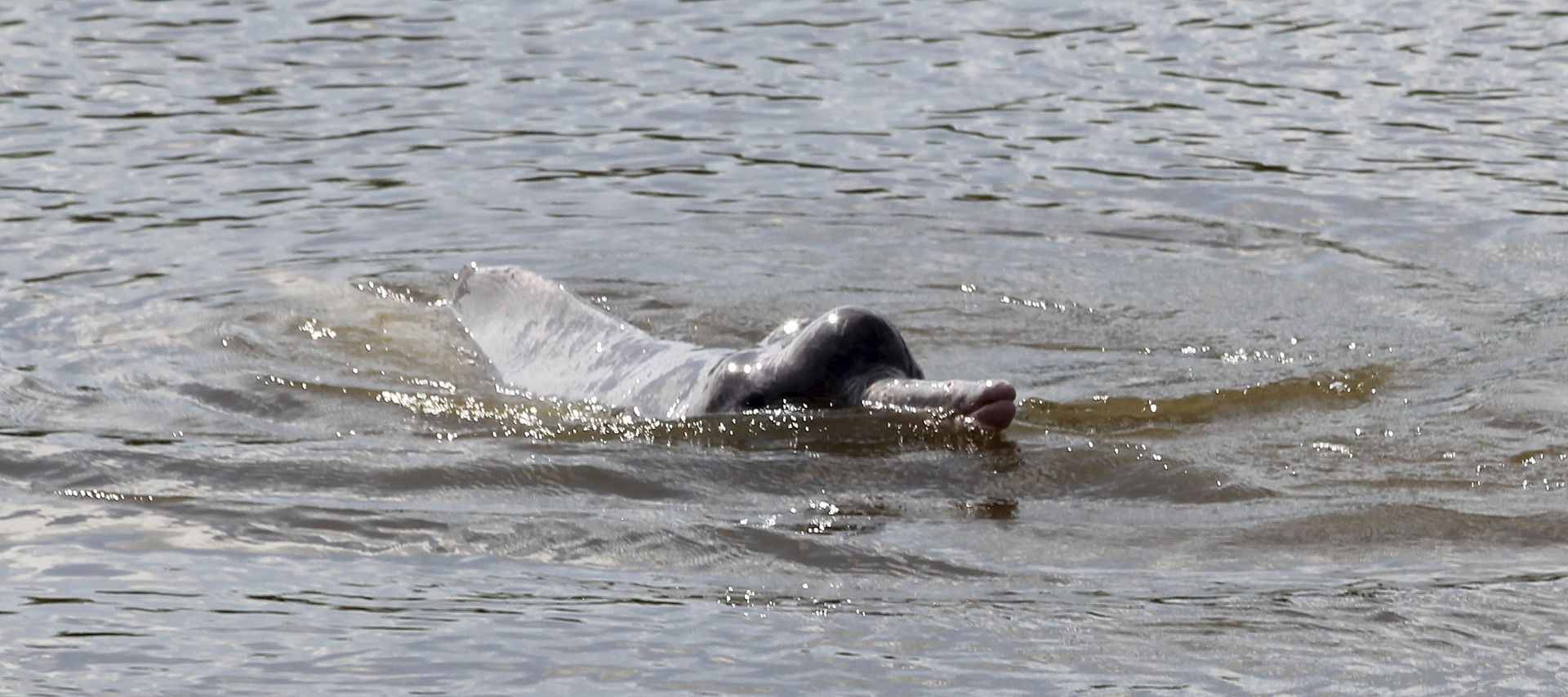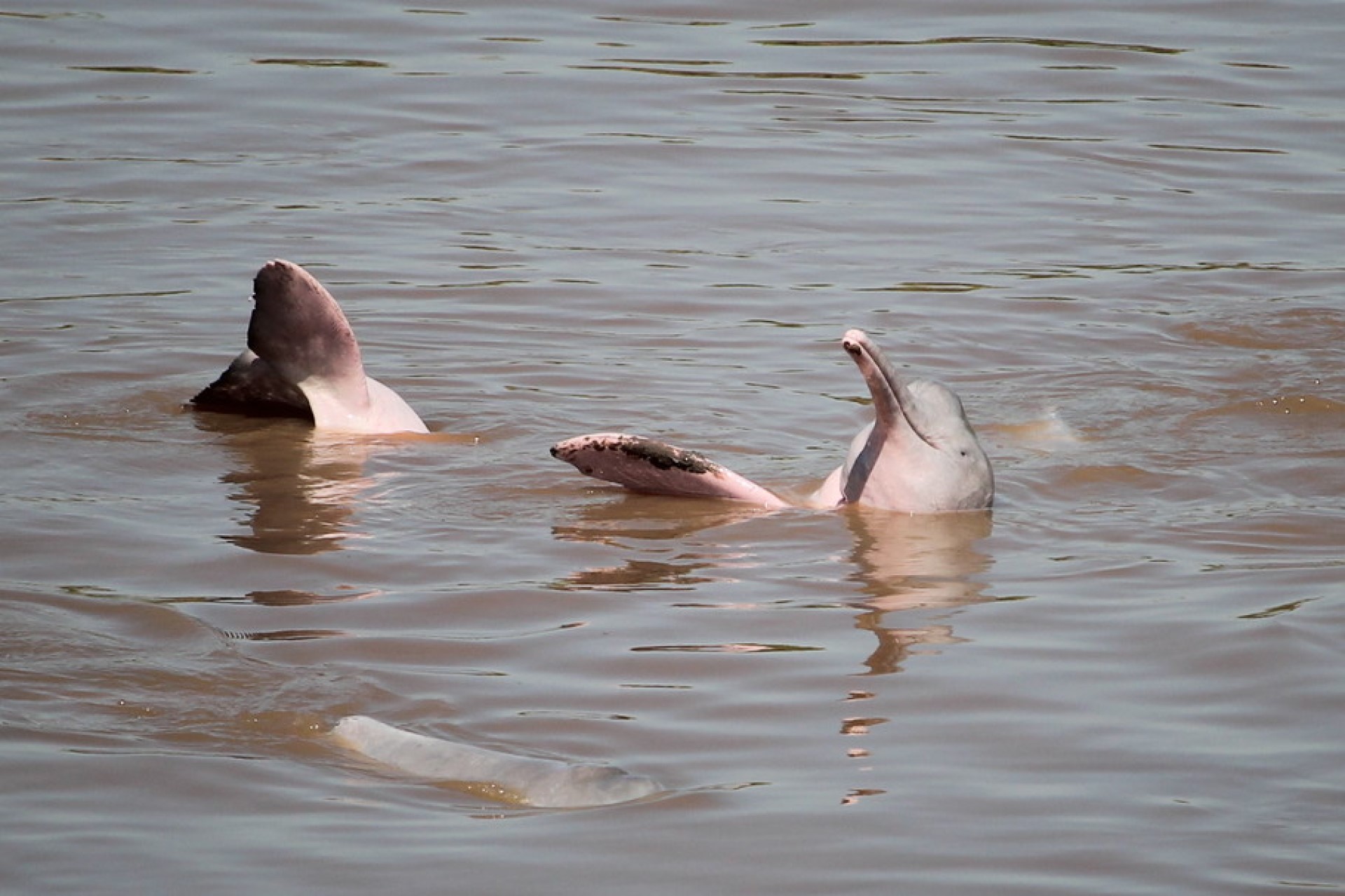
Araguaian river dolphin
The Araguaian river dolphin or Araguaian boto is a South American river dolphin population native to the Araguaia–Tocantins basin of Brazil.
The recognition of I. araguaiaensis as a distinct species is still debated. It was originally distinguished from the Amazon river dolphin in January 2014. On the basis of nuclear microsatellite and mitochondrial DNA data as well as differences in skull morphology (it generally has a wider skull). It also differs from the Amazon and Bolivian river dolphins in the number of teeth per hemimandible (24–28 versus 25–29 and 31–35, respectively).
River dolphins have a complex set of acoustic calls that help shed light on their personalities, behaviours and interaction with other river dolphins. In a study by Gabriel Melo-Santos et. Al they analysed frequency contours of 727 signals They found that these signals had a critical similarity value of 96% and frequency contours were categorized into 237 sound-types. Interestingly the most notable and frequent sounds were emitted when calves were present shedding light on a close and complex mother child relationship. The findings show that the acoustic sounds of river dolphins are incredibly complex and are similar to those of by social delphinids, such as orcas and pilot whales.
The total population of the species is estimated to be of the order of 600 to 1500 individuals, and genetic diversity is limited.[4] The ecology of its habitat has been adversely affected by agricultural, ranching and industrial activities, as well as by the use of dams for hydroelectric power. The inhabited section of the Araguaia River probably extends over about 1500 km out of a total length of 2110 km. The Tocantins River habitat is fragmented by six hydroelectric dams, so the population there is at particular risk.[4] The authors of the discovery paper regard its probable eventual IUCN status to be Vulnerable or worse.
The largest number of individuals of the new species is likely to occur in and around Cantão State Park, which contains most of the lakes in the Araguaia basin. However, commercial fishermen around the park have been killing them because they sometimes steal fish from nets. Shooting is common, but around protected areas like Cantão, where the sound of a gun might attract park rangers, some fishermen have taken to putting out poisoned bait for dolphins. The southernmost population of the species is a small group of isolated individuals in the Tocantins river above the Serra da Mesa dam.
Below you will find a list of any articles which mention this species specifically, below that is a video of this species in the wild. Below this, we will list any tourism opportunities (if any that we connect with).












